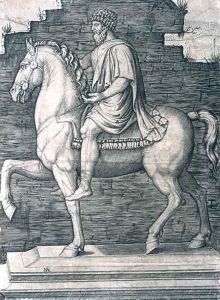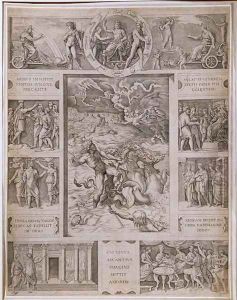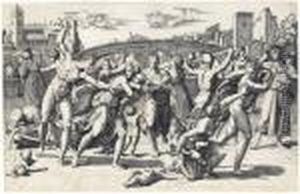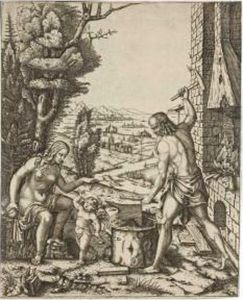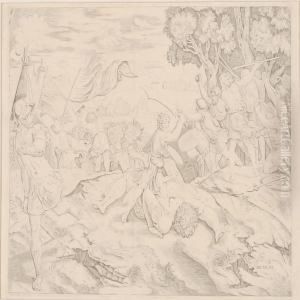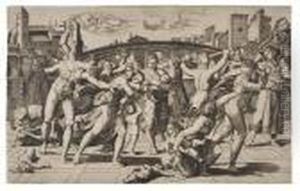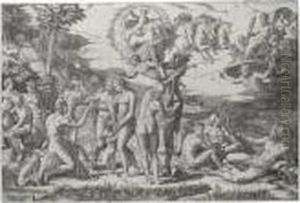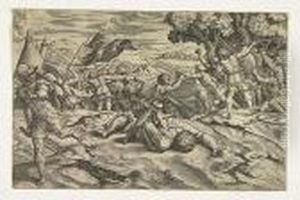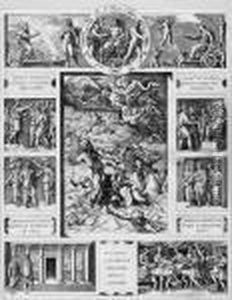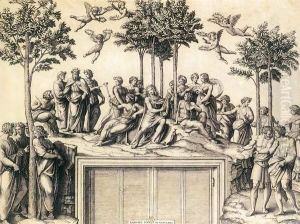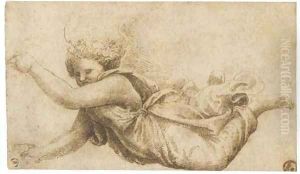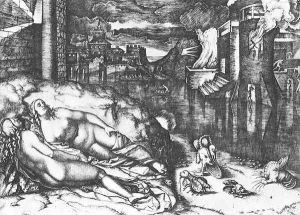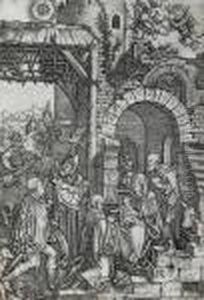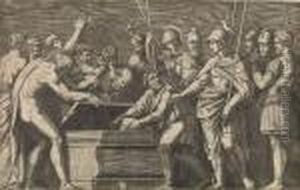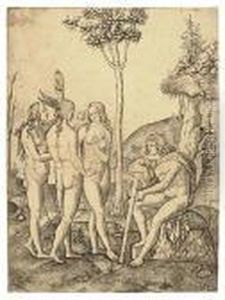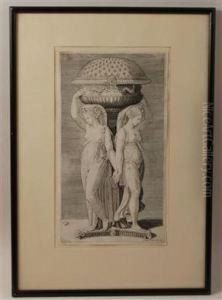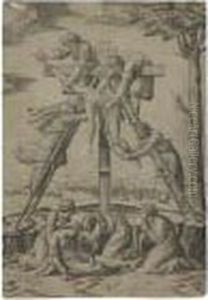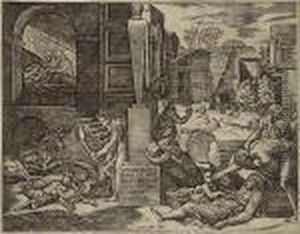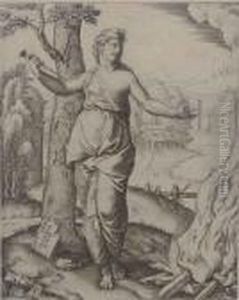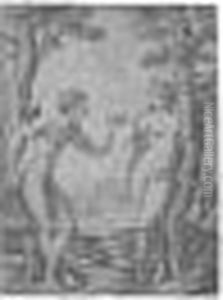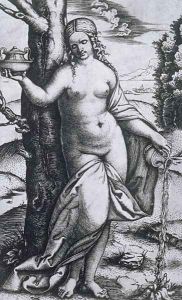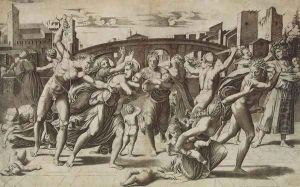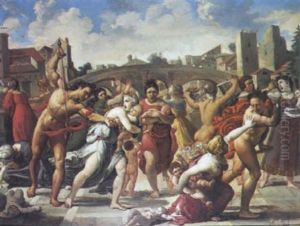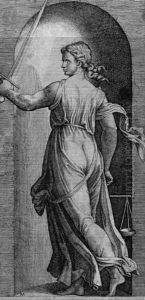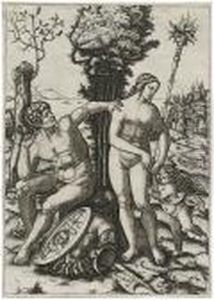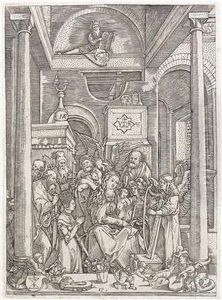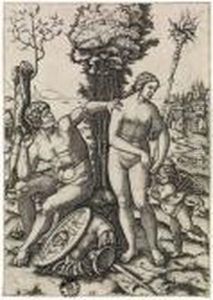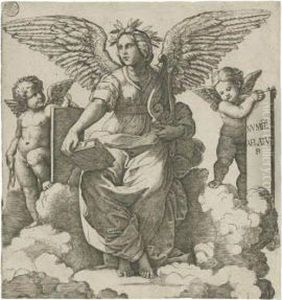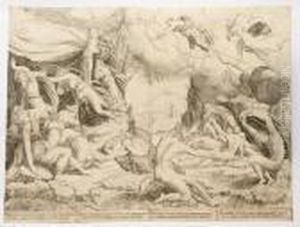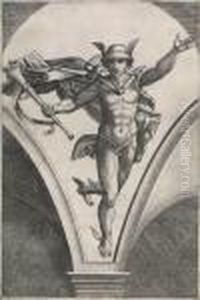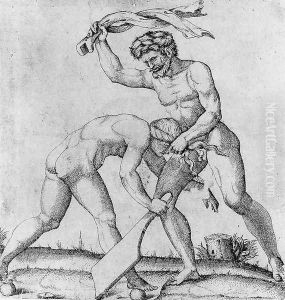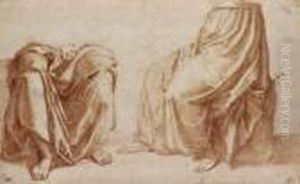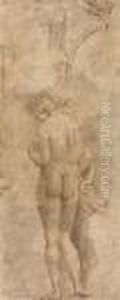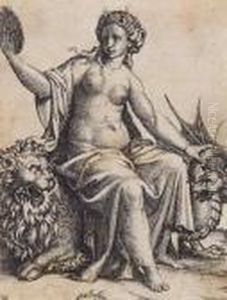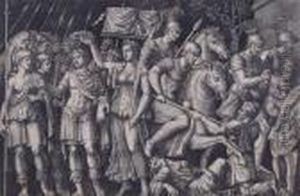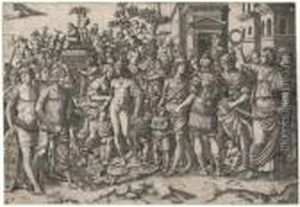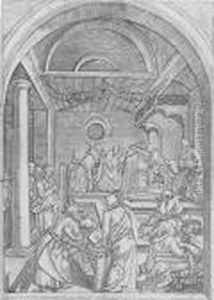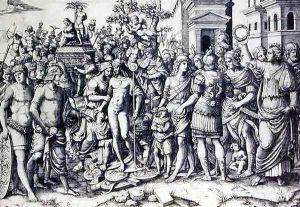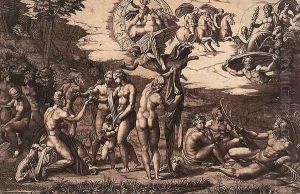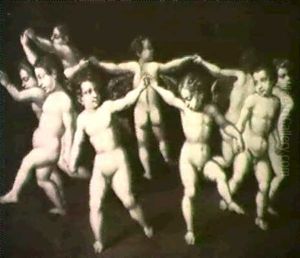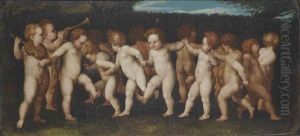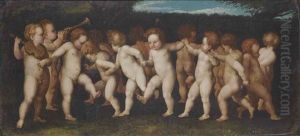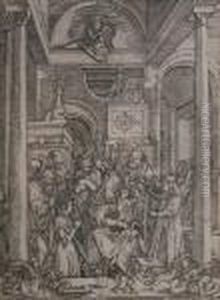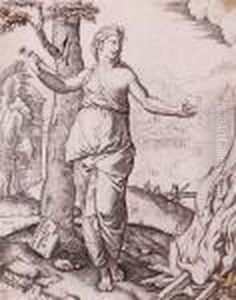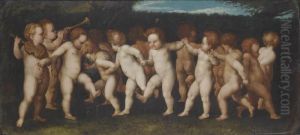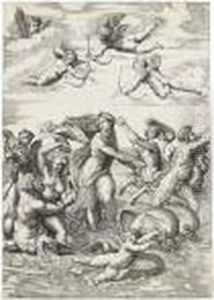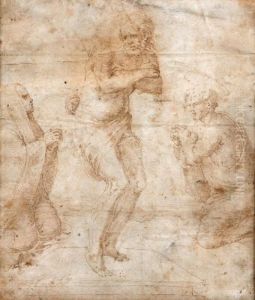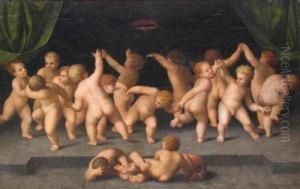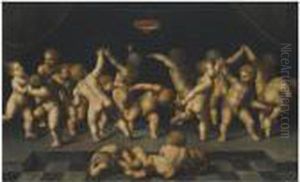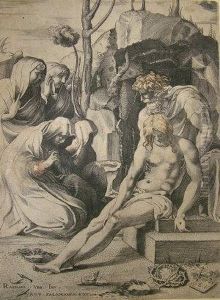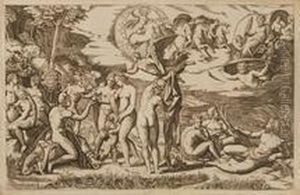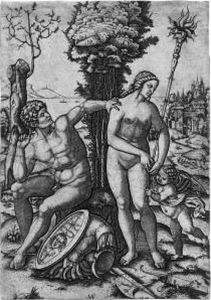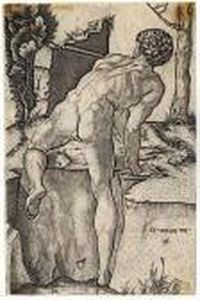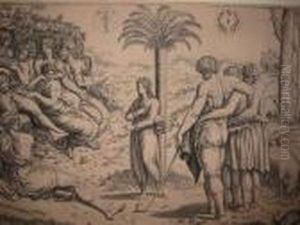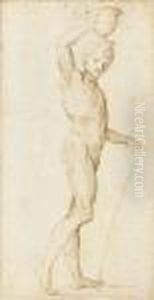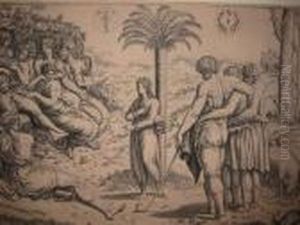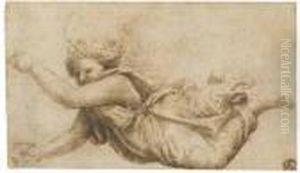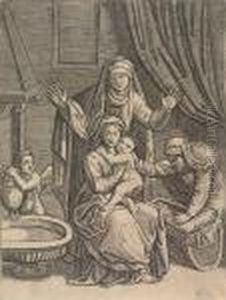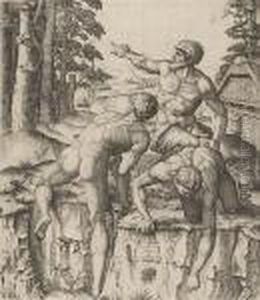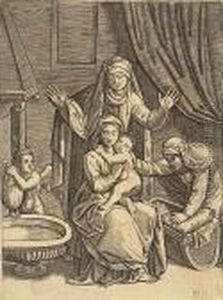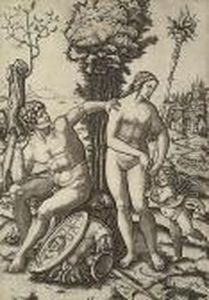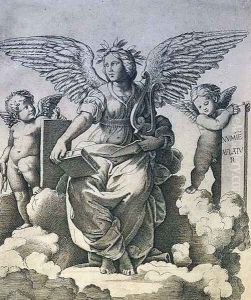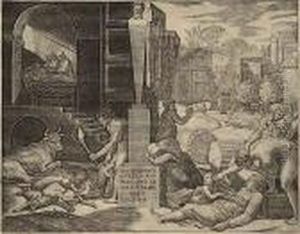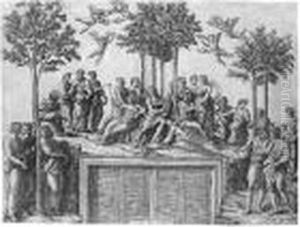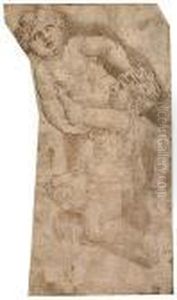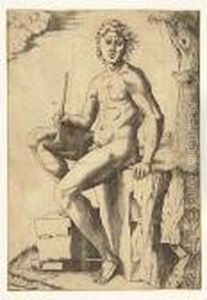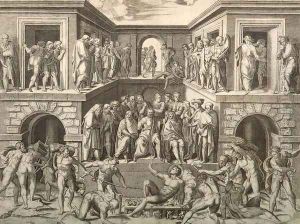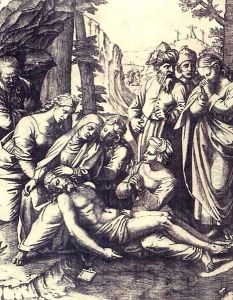Marcantonio Raimondi Paintings
Marcantonio Raimondi, also known as Marc'Antonio, was an Italian engraver, born in Bologna around 1480. He is renowned for being one of the most significant and prolific printmakers of the Renaissance period. Raimondi began his artistic journey studying under the goldsmith and painter Francesco Raibolini, also known as Francia, who had a profound influence on the young artist's development. It was under Francia's tutelage that Raimondi learned the craft of engraving, initially in the service of creating intricate designs on metals.
After mastering the art of engraving, Marcantonio moved to Venice, where he was greatly influenced by the works of the prominent painter Albrecht Dürer. He copied several of Dürer's works, which led to a brief legal conflict between the two artists when Dürer visited Venice in 1506. Despite this dispute, Raimondi's reproductions helped to disseminate Dürer's style throughout Italy and contributed to the cross-fertilization of Northern and Italian Renaissance art.
Raimondi's most significant collaboration was with Raphael Sanzio, one of the great masters of the Renaissance. After moving to Rome, probably around 1510, he became associated with Raphael's workshop. There, Raimondi's job was to translate Raphael's drawings into prints. This partnership was mutually beneficial: Raphael's designs reached a wider audience through Raimondi's prints, and Raimondi gained fame by working with one of the most revered artists of the time. Their collaboration produced some of the era's most celebrated prints, including 'The Judgement of Paris' and 'The Massacre of the Innocents'.
Throughout his career, Marcantonio Raimondi showed exceptional skill in engraving, which allowed him to capture the subtleties of the human form and the intricacies of perspective and shading. His prints were known for their clarity, elegance, and the fine detail that he could achieve. This level of detail was revolutionary for the time and set a new standard for printmakers.
Raimondi's work had a lasting impact on the art world, influencing subsequent generations of artists and engravers. His prints served as an important vehicle for the spread of Renaissance art and ideas across Europe. Despite his success, Raimondi faced financial difficulties later in life, particularly after the Sack of Rome in 1527, which led to a decline in the patronage of the arts.
The exact date of Marcantonio Raimondi's death is not known, but it is believed that he died around 1534 in relative obscurity. His legacy, however, endures through his contributions to the art of engraving and his role in the proliferation of Renaissance aesthetics.

